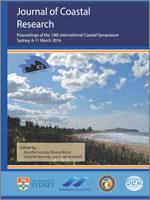Fang, J.Y.; Chen, Y.P.; Yao, P., and Su, M., 2016. Effective Roughness Height in High-Concentrated Flows. In: Vila-Concejo, A.; Bruce, E.; Kennedy, D.M., and McCarroll, R.J. (eds.), Proceedings of the 14th International Coastal Symposium (Sydney, Australia). Journal of Coastal Research, Special Issue, No. 75, pp. 33–37. Coconut Creek (Florida), ISSN 0749-0208.
The effective roughness height is an important parameter in coastal sediment transport models. It has been extensively investigated in the past but few research results are related to the high-concentrated flows which often occur in a silty coast. A series of experiments has been carried out in a wave-current flume with silt-sized sediment bed. The mean velocity profiles were measured under different combined wave-current conditions. The effective roughness heights were calculated based on the curve fitting of measured velocity profiles by following the velocity profile model of You (1994). The accuracy of three empirical models, namely, Grant and Madsen (1982), Li and Amos (1998) and You (1996) was examined with the ‘measured’ effective roughness heights. The results show that all the models are not much accurate for the high-concentrated flows, particularly in the case with a relatively small sediment size. Therefore, cautions should be taken when applying those models in the silty coast, particularly during the extreme events.





